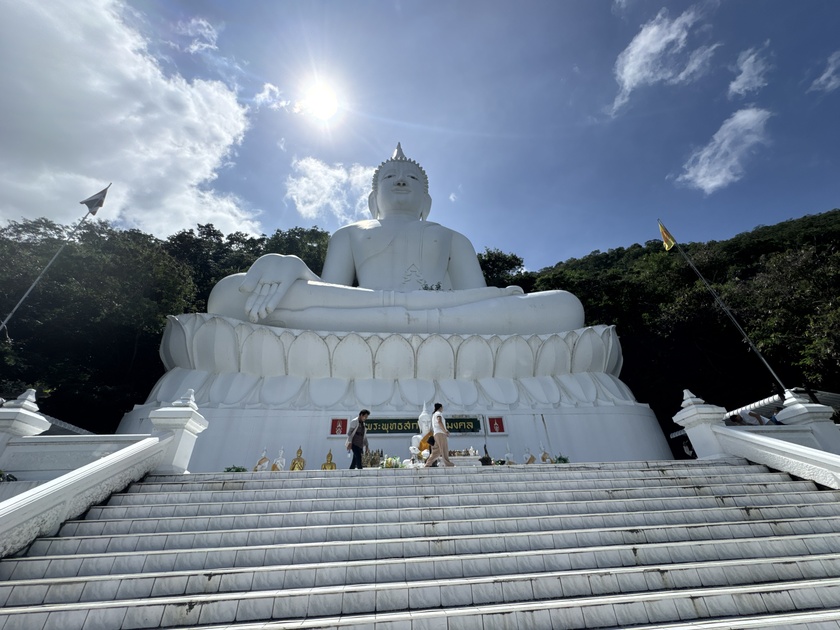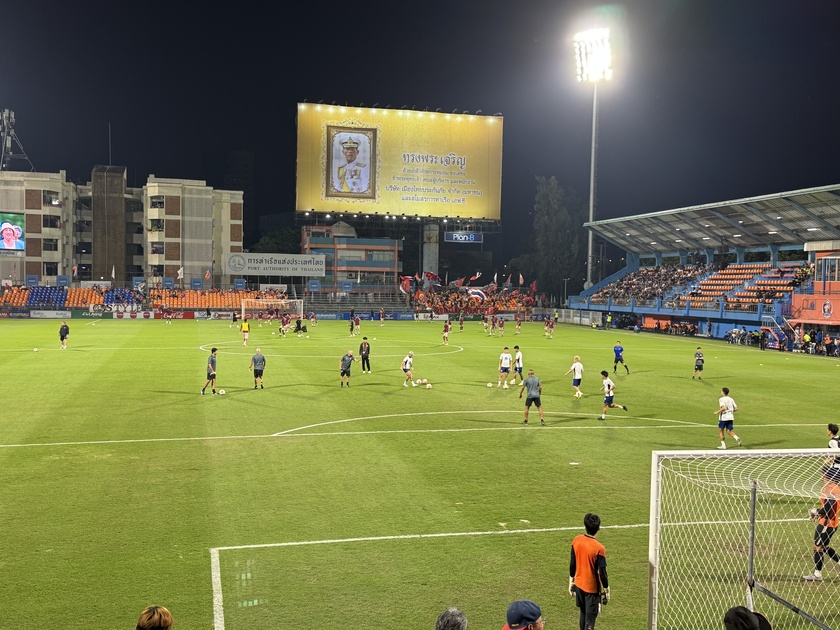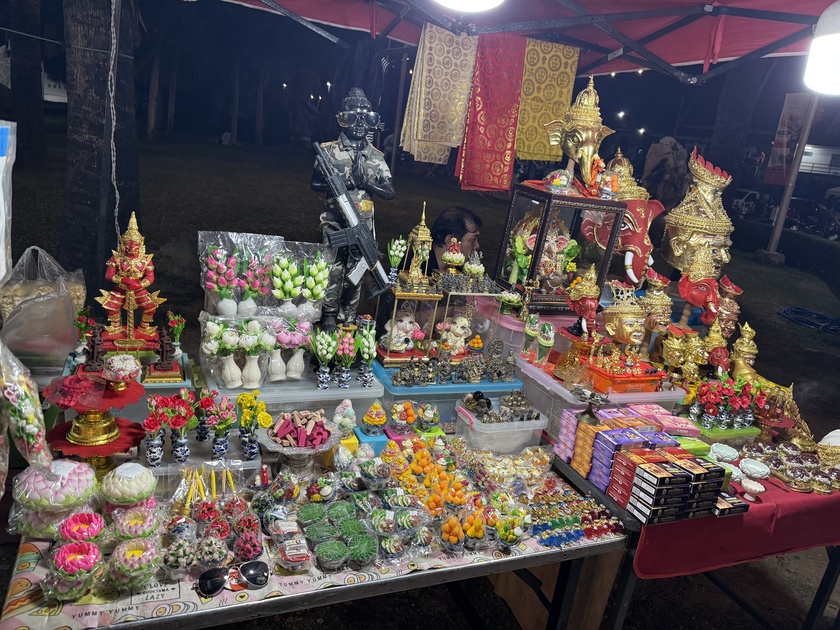Wat Phra Khao, also known as Wat Thep Phithak Punnaram, is a Buddhist temple located in the Pak Chong District of Nakhon Ratchasima Province, Thailand. It is situated on Khao Siat A hill in Ban Klang Dong, approximately 2 km off the Mittraphap Highway (the main road from Bangkok to Nakhon Ratchasima). The temple is nestled amid lush greenery near Khao Yai National Park, making it a scenic spot for visitors traveling between Bangkok and the Isan region.
The origins of Wat Phra Khao are believed to date back to the Ayutthaya period (1351–1767), though exact founding details remain uncertain. The temple underwent significant development in the late 20th century. In 1997, a new chapel was constructed to replace an older, dilapidated one. Around this time, the temple’s most iconic feature—a massive white Buddha statue—was built, elevating its status as a local landmark.
The statue, officially named Phra Buddha Sakolsima Mongkhon, was bestowed this name by His Majesty King Bhumibol Adulyadej ...
Port FC vs Uthai Thani FC: Thai League 1 Matchup – December 7, 2025
The Thai League 1 encounter between Port FC and Uthai Thani FC occurred on December 7, 2025, at PAT Stadium in Bangkok, Thailand. This Round 14 fixture featured Port FC (7-3-3, 24 points, 3rd place) against Uthai Thani FC (3-5-5, 14 points, 10th place) in a contest that showcased Port’s offensive prowess against Uthai Thani’s determined but leaky defense. Kickoff was at 7:00 PM with a lively atmosphere fueled by Port’s dedicated “The Port” fan group.
Port FC emerged victorious with a 3-1 win, extending their unbeaten streak and solidifying their top-tier aspirations. The hosts controlled the tempo, outshooting Uthai Thani despite a brief equalizer. The first half saw Port take the lead in the 24th minute when Peeradol Chamratsamee slotted home after a clever assist from Worachit Kanitsribumphen (1-0). Uthai Thani leveled in the 74th minute through William Weidersjö’s opportunistic strike (1-1), but Port quickly ...
Wat Nuea Floating Market, also known as Suk Jai Floating Market (ตลาดน้ำสุขใจ), is a small, authentic riverside night market held every Friday evening along the eastern bank of the River Kwai in central Kanchanaburi. From 5:00 PM to 9:00 PM, with the liveliest hours between 6:00 and 8:30, the paved promenade and temple grounds in front of Wat Thewa Sangkharam come alive with local vendors. Despite the “floating” name, all stalls are set on land and no vendor boats tie up at the pier; the title is a traditional reference rather than a literal description.
The atmosphere remains relaxed and overwhelmingly local, with string lights stretching above the walkway, live Thai acoustic music drifting from small stages, and families settling in for the evening. The cool river breeze and views of the illuminated Kwai, often with the distant glow of the River Kwai Bridge, create a calm backdrop. Vendors offer a full range of inexpensive Thai street food, iced drinks, clothing,...
Thai long boat racing traces its origins to the Ayutthaya Kingdom (1350–1767), where it began as military training for war canoes that could carry 40–60 soldiers along rivers like the Chao Phraya. Historical records indicate the first organized race occurred during a royal ceremony under King Ekathatsarot (r. 1605–1620), evolving from spontaneous challenges between temple boats during merit-making processions.
By the Rattanakosin era (1782–present), kings like Rama V formalized it as a national spectacle, commissioning carved teak boats and silver trophies, with races tied to the end of Buddhist Lent (Awk Phansa) in September–November when rivers swell post-monsoon.
These events blend sport, spirituality (with boat-blessing rituals invoking river spirits), and community rivalry, featuring 30–55 paddlers per boat chanting rhythmic songs.
Over four centuries, they’ve symbolized Thai riverside life, though modern variants include motorized long-tail races; traditional paddle events ...




















































